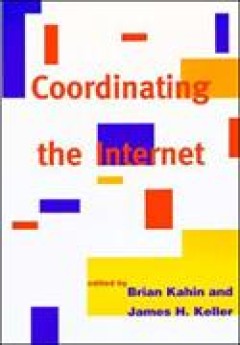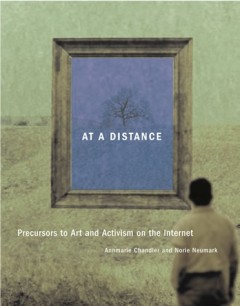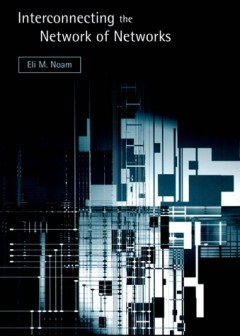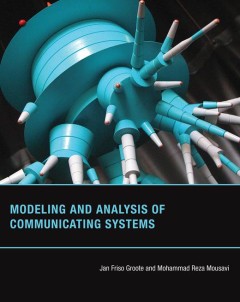Filter by

Telecommunications Switching Principles
Possibly the largest interconnected systems in the world are telecommunications networks for public and private use. The principles underlying the design of the transmission and terminal components in this worldwide network are well established and coherent; however those involving the design of the switching center component are not. Based on the author's many years of experience in the design…
- Edition
- -
- ISBN/ISSN
- 9780262310802
- Collation
- 1 online resource (xiii, 327 pages) :illustrations
- Series Title
- -
- Call Number
- -

The Communications Toolkit: How to Build and Regulate Any Communications Busi…
A toolkit of basic principles to help those in business, industry, law, and other professions deal with a constantly changing communications sector. OCLC-licensed vendor bibliographic record.
- Edition
- -
- ISBN/ISSN
- 9780262278539
- Collation
- 1 online resource (xiv, 271 pages) :illustrations
- Series Title
- -
- Call Number
- -

Coordinating the Internet
For years, the world saw the Internet as a creature of theU. S. Department of Defense. Now some claim that the Internet is aself-governing organism controlled by no one and needing nooversight. Although the National Science Foundation and othergovernment agencies continue to support and oversee criticaladministrative and coordinating functions, the Internet is remarkablydecentralized and uninst…
- Edition
- -
- ISBN/ISSN
- 9780262286909
- Collation
- -
- Series Title
- -
- Call Number
- -

Cost Proxy Models and Telecommunications Policy: A New Empirical Approach to …
An empirical approach to understanding telecommunications regulation based on the use of a sophisticated engineering cost proxy model.The telecommunications industry defies easy characterization. The long-distance sector is highly competitive and the local exchange sector much less so, while digital transmission and switching have blurred the distinction between traditional voice communication …
- Edition
- -
- ISBN/ISSN
- 9780262273589
- Collation
- -
- Series Title
- -
- Call Number
- -

At a distance :precursors to art and activism on the Internet
Networked collaborations of artists did not begin on the Internet. In this multidisciplinary look at the practice of art that takes place across a distance -- geographical, temporal, or emotional -- theorists and practitioners examine the ways that art, activism, and media fundamentally reconfigured each other in experimental networked projects of the 1970s and 1980s. By providing a context for…
- Edition
- -
- ISBN/ISSN
- 9780262270144
- Collation
- 1 online resource (xiv, 486 pages) :illustrations.
- Series Title
- -
- Call Number
- -

Technologies of choice? :ICTs, development, and the capabilities approach
Information and communication technologies (ICTs)--especially the Internet and the mobile phone--have changed the lives of people all over the world. These changes affect not just the affluent populations of income-rich countries but also disadvantaged people in both global North and South, who may use free Internet access in telecenters and public libraries, chat in cybercafes with distant fam…
- Edition
- -
- ISBN/ISSN
- 9780262305518
- Collation
- 1 online resource.
- Series Title
- -
- Call Number
- -

Interconnecting the network of networks
This book describes the transformation of telecommunications from national network monopolies to a new system, the "network of networks," and the glue that holds it together, interconnection. By their very nature, monopoly-owned networks provided a small number of standardized, nationwide services. Over the past two decades, however, new forces in the world economy began to unravel this traditi…
- Edition
- -
- ISBN/ISSN
- 9780262280693
- Collation
- 1 online resource (ix, 318 pages) :i llustrations
- Series Title
- -
- Call Number
- 005 NOA i

The Internet upheaval : raising questions, seeking answers in communications …
"At the beginning of 2000, the U.S. economy was enjoying the longest period of sustained growth and economic prosperity in its history. According to The Internet Upheaval, part of the explanation for this phenomenon is a consequence of how information technologies, in particular the Internet, are upending fundamental economic and social structures.These research studies explore some of the tele…
- Edition
- -
- ISBN/ISSN
- 0262285606
- Collation
- 1 online resource (xxix, 426 pages) : illustrations
- Series Title
- -
- Call Number
- 001 INT

Networks and state : The global politics of Internet governance
"When the prevailing system of governing divides the planet into mutually exclusive territorial monopolies of force, what institutions can govern the Internet, with its transnational scope, boundless scale, and distributed control? Given filtering/censorship by states and concerns over national cybersecurity, it is often assumed that the Internet will inevitably be subordinated to the tradition…
- Edition
- -
- ISBN/ISSN
- 0262289660
- Collation
- 1 online resource (313 pages) :illustrations.
- Series Title
- -
- Call Number
- -

Modeling and analysis of communicating systems
Complex communicating computer systems -- computers connected by data networks and in constant communication with their environments -- do not always behave as expected. This book introduces behavioral modeling, a rigorous approach to behavioral specification and verification of concurrent and distributed systems. It is among the very few techniques capable of modeling systems interaction at a …
- Edition
- -
- ISBN/ISSN
- 0262321033
- Collation
- 1 online resource (xvi, 376 pages) :illustrations
- Series Title
- -
- Call Number
- -
 Computer Science, Information & General Works
Computer Science, Information & General Works  Philosophy & Psychology
Philosophy & Psychology  Religion
Religion  Social Sciences
Social Sciences  Language
Language  Pure Science
Pure Science  Applied Sciences
Applied Sciences  Art & Recreation
Art & Recreation  Literature
Literature  History & Geography
History & Geography